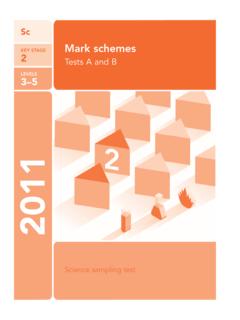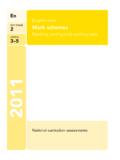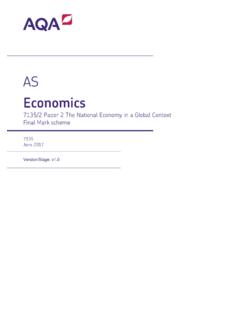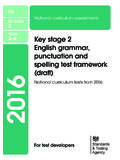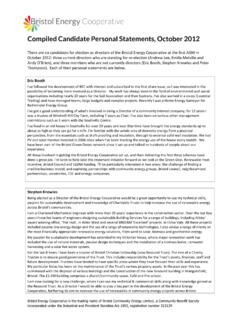Transcription of Turkey’s mining industry - gbreports.com
1 TABLE OF CONTENTSThis report was researched and prepared by Global Business Reports ( ) for Engineering & mining Journal. Editorial researched and written by Alice Pascoletti and Amelia more details, please contact 2014 Cover photo courtesy of REPORT By GBR FOR E&MJTurkey s mining industryA new day for mining dawns for a fast-growing regional powerTurkey: an with Minister of Energy and NaturalResources, Taner Y ld mining regulations and : Turkey s crowning a Strong Supplier the world s traditional mining markets struggle through the trough of a mining cycle, Turkey has emerged as a rare story of growth, offering a compelling jurisdiction to international mining investors in pursuit of friendlier skies.
2 To date, the country has not shown huge ore deposits of blockbuster potential; rather its key at-tractions are economic discoveries ranging across 72 mineral types, situated in an open playing field with attractive incentives and a growing supplier base to assist in low cost project execution. Aiming to become a top 10 global economy by the 100th an-niversary of the Turkish republic in 2023, Turkey has set its sights 84E&MJ May : An OverviewA rising mining market emerges in a challenging global context. mining iN TurkEyon reaching $500 billion in exports, $15 billion of which is ear-marked to come from the mineral sector. With this ambitious goal in mind, the country is looking beyond the state-owned entities and domestic conglomerates that have largely fueled the industry thus far.
3 Foreign investment will play a decisive role in meeting this goal, or falling short of the the government continues its privatization process that be-gan in the early 2000s, private companies have brought increased production rates and higher profits to a stagnant industry . Today the sector is over 85% privately-held, posting modestly healthy growth rates such as in 2012, even as the global mining downturn began. Today just 10-15% of Turkey s mining operations belong to public bodies, such as Turkish Coal Enterprises (TKI), Turkish Hard Coal Enterprises (TTK) and ETI Maden. In the future, this ratio will be even smaller. We are ready to increase foreign mining compa-nies share in our country.
4 To encourage these foreign companies, the Ministry of Economy has established new incentive schemes for strategic investments, said Nevzat Kavakl , deputy undersecretary of the Ministry of Energy and Natural the government is keen to support the sector with attractive incentives, as with any developing mining jurisdiction, a steep learning curve persists for policymakers bogged down by wider political and economic turbulence. Delays in forestry permits and a lack of clarity in regulatory implementation have slowed the sector s dynamic growth. Fraser Institute surveys placed Turkey 53rd in 2013, while 2014 results show improvement with a climb to 37 out of 112 jurisdictions.
5 To continue on its upward trajectory, the sector is focused on luring in more foreign juniors and bringing the practices of its domestic players up to international s fast growing economy, boasting a GDP that has tripled since 2003, its young population with a median age of 29, and its central geographic positioning lend the mining sector strong funda-mentals for growth. A period of wider economic uncertainty, which emerged in 2013 with the Gezi Park protests and an ongoing high-level government corruption probe, has been slightly abated by the highly anticipated local elections in March 2014, bringing indica-tions for the August presidential elections and general elections in 2016.
6 Investors have opted for a wait-and-see mode as the country tests the boundaries of its democratic process, yet stay at the ready for the green light to reactivate Turkey s booming mining i open-pit iron ore mine. Photo courtesy of May 201485 InterviewInterview with Minister of Energy and Natural Resources, Taner Y ld zTurkey improved significantly in the 2012-2013 Fraser Institute rank-ings. How are these improvements reflected in the recent growth fig-ures of the mining industry ?Turkey ranks 10th in the world in the diver-sity of its minerals; however until 10 years ago the mining sector in our country could not reach its real potential. We, as govern-ment, have implemented the necessary le-gal arrangements for the mining sector to come to the place it deserves.
7 Today, we know that 77 of the 90 types of minerals traded in the world are located in Turkey and approximately 60 of these minerals are produced provide us with a brief over-view of the main pieces of legisla-tion governing sector licensing as they have evolved over time?In 2004, with the enactment of Law No. 5177, the licensing process in Turkey was reformed to reduce bureaucracy in the sec-tor. This increased the demand for mining license; however the absence of application criteria and the low cost of obtaining licenses have led to a high number being granted for speculative purposes and not exploration.
8 As a result of this demand, the number of licenses rose to 45,900 in the early created problems in the sector that were addressed with mining law No. 5995, which came into force in June 2010 and rearranged the length and requirements for the application and exploration periods. This reform removed the presence of speculative licenses and paved the way for more explo-ration activities. After introducing this new law, private sector firms have significantly promoted exploration the enactment of Law No. 5995, the number of licenses has dropped from 45,900 to 23,475 as of December 31, 2013. This is a direct result of the elimina-tion of investors who are not interested in actual exploration activity.
9 While the number of license applications in 2010 dropped to 4,342 after the new law, they have since risen to 7,400 in is the importance of mining to the national economy and how do you envision its potential role as a growth driver going forward?The mining sector s GDP in 2003 stood at about $ billion; in 2012 it amounted to about $ billion. By the end of 2013, it reached nearly $12 billion. Based on this data, mining s share in GDP has increased nearly times in the past 10 years. There has been similar growth in mining exports, which in 2003 amounted to $841 million and increased six fold to reach $ billion by the end of 2013.
10 We see these figures increasing going forward as the sector aims to reach its goal of $15 billion in mineral exports by 2023, the 100th anniversary of the republic. What steps is the government taking to advance exploration and improve the industry s un-derstanding of its underground potential?The amount of meters drilled in Turkey reached million m in 2013, a significant increase compared to 100,000 m in 2002. Coal reserves have increased from 8 billion mt to 14 billion mt thanks to the new coal reserves identified by General Directorate of Mineral Research and Exploration (MTA). What is your outlook for Turkey s mining industry in the near term?

